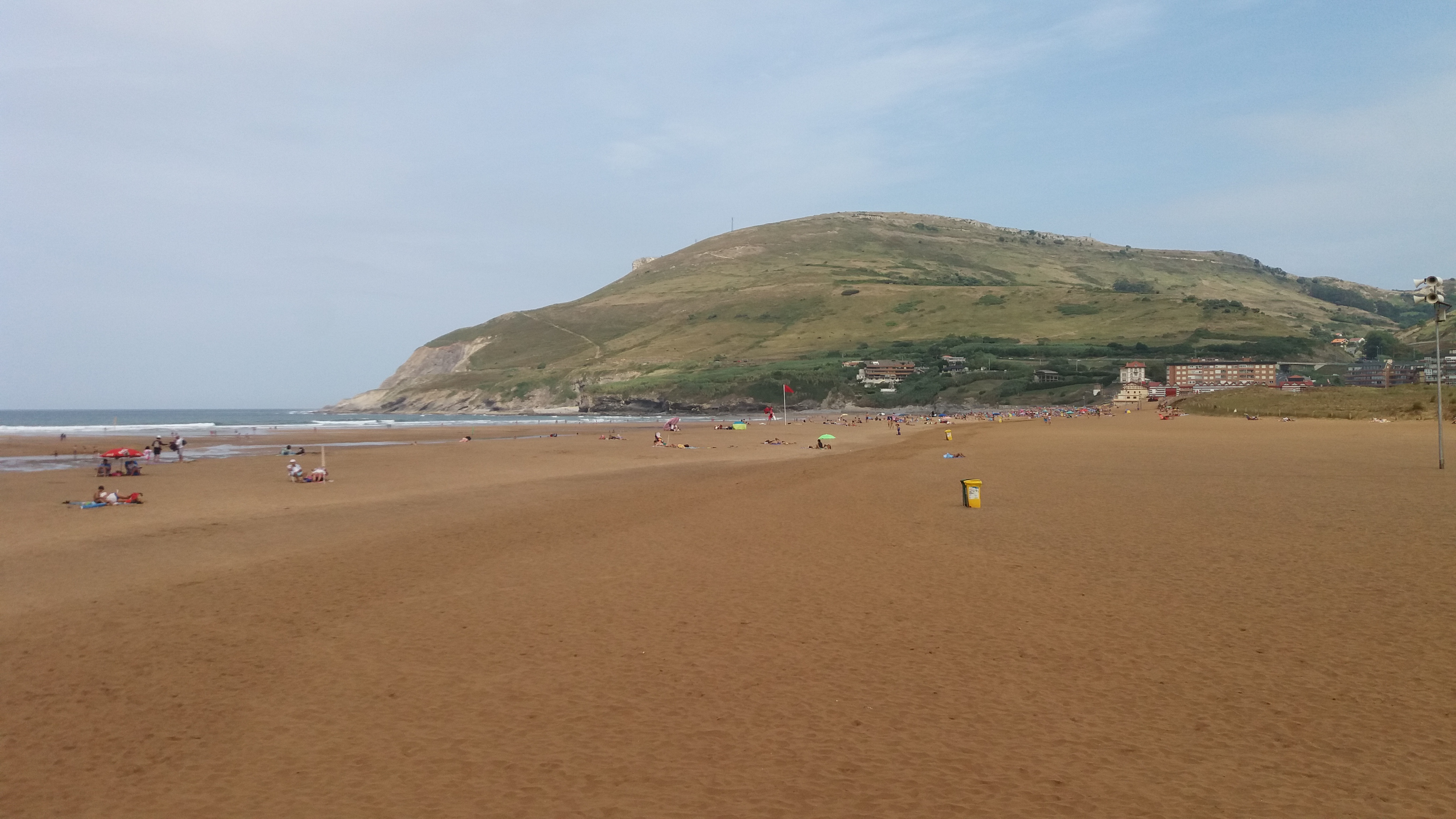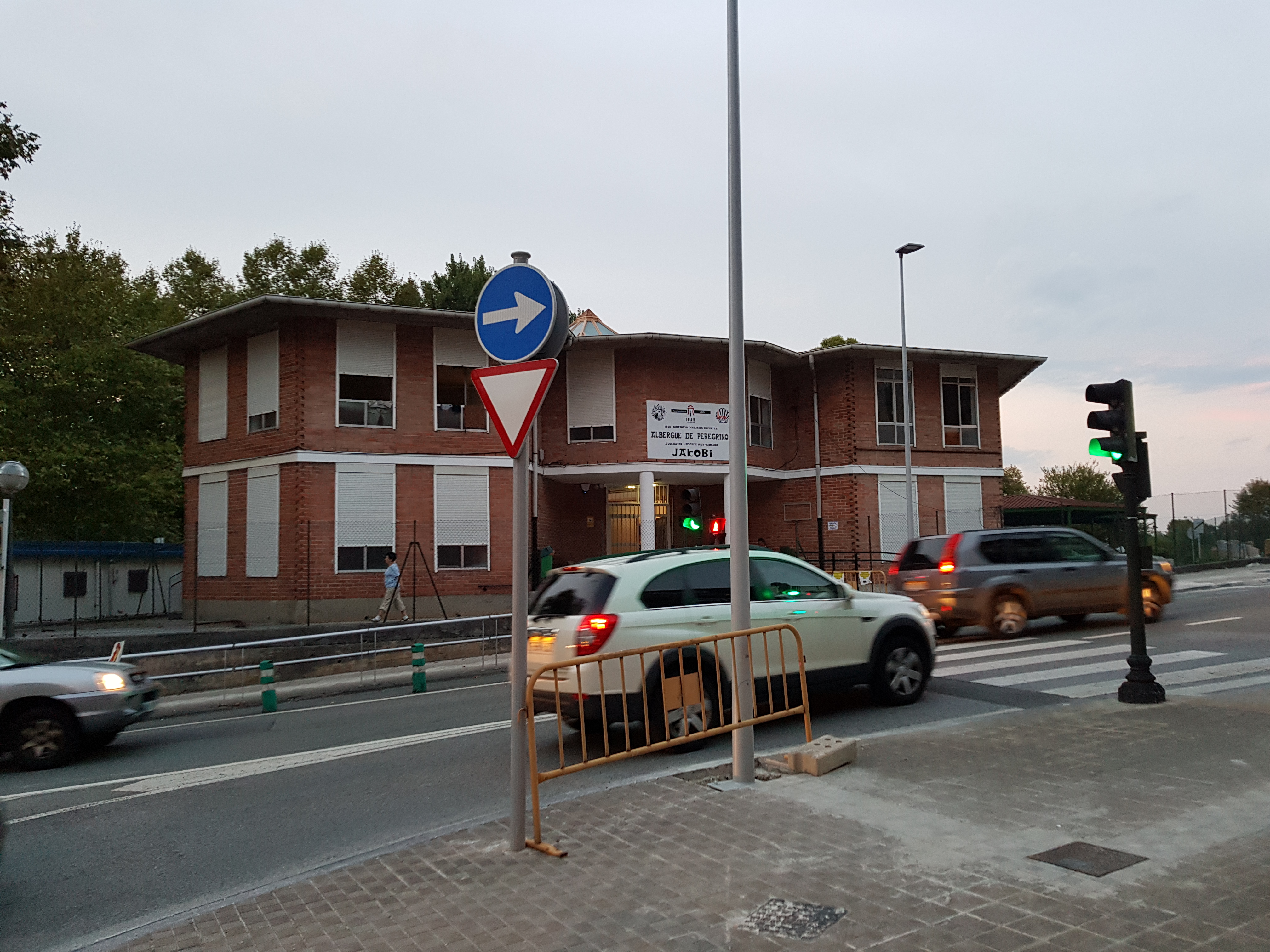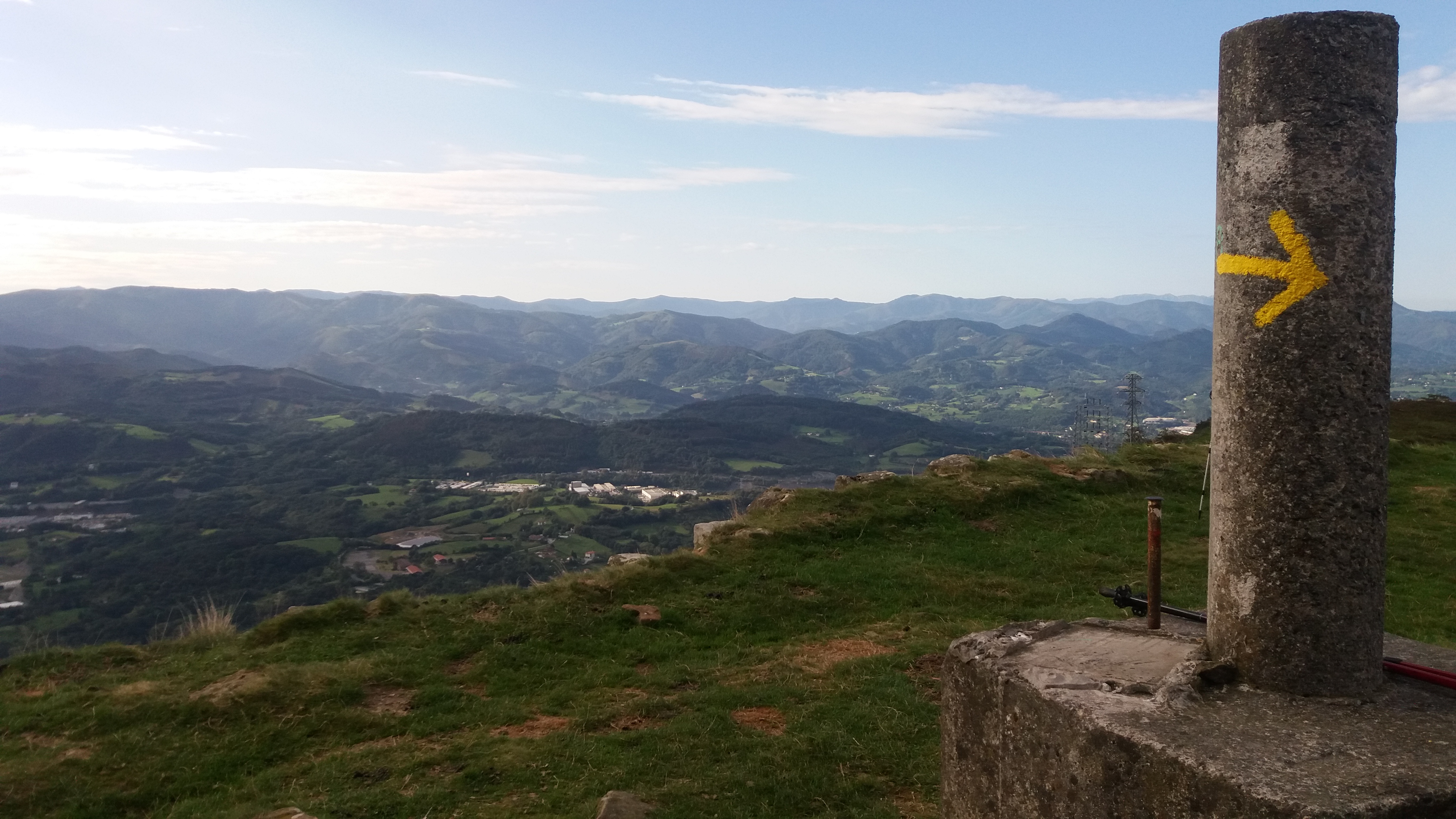September 16, 2018. The sinister encounter with the giggle Korean close to the giant spider. We glide on Krupp steel and move from bar to bar.
The night in the stuffy room did not give us much rest. Some of the younger and quite attractive pilgrims also produced a good deal of departure noise. The general mood corresponded to the situation in this chamber – thick air. We took our time with the march to escape the general hustle and bustle. Besides, we were still pretty groggy. It was again such a moment where one drags oneself to the bathroom as if being completely exhausted and the last rest of fantasy is not enough to imagine that one will walk up and down several kilometres today. Then one simply laces the clammy hiking shoes on the painful feet, puts the felt collection of sound bricks in the backpack on the back and starts walking. The first “Buen Camino” is already answered with a smile. Even without having inhaled the first coffee of the day. Or not, fellow pilgrims?
The morning freshness hit us as we left the hostel and passed the brightly coloured Jesus statue in front of it. It went steeply down through the quarter where the square with the many pintxos bars was. The streets and squares were still littered with the garbage of the previous night, which was now started to remove by the cleaning crews.

So it was a challenge to get on to the Guggenheim Museum without being washed into the Nervión by the cleaning vehicles equipped with heavy water tanks. Finally, we saw how the morning light was reflected in the silver facade of the spectacular building.

Of course we crossed under the big black spider and admired the unique architecture. So we settled down in a small park next to the building and enjoyed this as well as our fruity and biscuit-ish breakfast.
As if out of nowhere, the giggling Korean suddenly appeared out of the sun, happily agreed to walk with us to Potugalete and went his way. We looked at each other with a grin, exchanged a few words about him, turned our eyes to him and he was – gone. So we speculated long and intensely, also during the next days, if he was a supernatural creature who could appear and disappear again with a “WHOOP” sound. We had expected this for the whole further course of our journey, but unfortunately it did not happen.

After such an esoteric experience we continued on the right side of the river towards Getxo. The exclusively asphalted road stretched on, many industrial wastelands and other unattractive things lined the further stretch, where we met other pilgrims who also wanted to get this over quickly.
During a short rest Stijn found a Spanish ID card of a young woman from Bilbao. He wanted to hand it over to a police station. Vasek and I already imagined – with a suggestion of cynicism – that it must be a murder victim whose body had been fished out of the river. With his not quite perfect Spanish, Stijn would then get into contradictions in a smoky cellar room and be interrogated in a “robust” way for days. But it did not happen as well. For lack of a police station nearby Stijn handed in his identity card at a gas station.
Later we passed a badly littered cul-de-sac where people of similar ages to the girl on the map indulged in the communal consumption of mind-expanding substances, leaning against pimped out vehicles.

Finally we saw the town sign of Getxo and Portugalete on the opposite side. From there, scraps of words and music blew over to us from loudspeakers. In Portugalete a boat race took place, we could see it later on TV having our Café con Leche.
But first we had to the other side of the river. We crossed over with the hanging ferry (it was literally a real hanging race …). During the trip, a rowing boat was warming up at full speed, passing almost below us.

Instead of going through the folk festival on the shore, we found our fun with the open-air escalators made of hard German steel. The gradient to be overcome was rather a pill’s worth compared to other sections of the Camino, but we accepted it gratefully anyway.

The way to Pobeña was a little bit long, but contrary to what was described in the guidebook, the Camino separates into two routes, once through Ortuella and once passing it on the right. We took the bypass and thus had the pleasure to watch a young mother doing her workout while the baby was entertained by the smartphone. Meanwhile we helped ourselves from the fruit buffet we had brought along.
On the way through the hills to La Arena we met another young German couple in their early 20’s. They were on their very first stage and had gotten a bit lost before. They listened devoutly to us old pilgrim veterans as we told them where we had set off from and how unspeakably steep the previous mountains were.

On the last few kilometres to La Arena we passed a number of beautiful gardens where many a family enjoyed themselves. It was really good for us to slowly hear the sound of the waves again and to smell the salty sea air and finally we saw a beach with a lot of tourist hype and big sales stands for cheap looking shoes.

We also ignored the skull bar with a big skull in the village and walked along the beach towards a wooden bridge where we met a German pilgrim who had already stayed at the hostel in Pobeña. He went again to the sea.
We went on to check in at the hostel in Pobeña. It was not too late, but we were almost the last to be checked in.
I still tried to tell the grumpy hospitalero that if someone needed my bed I could set up my tarp in the garden, but that didn’t really get through to him. So I left it at the shrug of my shoulders and took care of body and laundry.
The beds were set up like midfield and defence of the Squadra Azzurra, the Italian national football team – tight and compact. Only light creepers more or less prevented the beds from wrapping themselves around their neighbours at night.
In contrast to the yellow guide there was no spin dryer. In addition, a German group of Generation Y – I later called them “German Mafia” – had taken possession of the washing machine for themselves. We had already seen this group shortly before Getaria. I was at least given a feeling of satisfaction that the hipster-bearded spokesman of the group, whose face one could certainly put the prefix “Sack-” on, had a little gossip with his girlfriend and she kept him at a distance. For me, they were the most unlikable pilgrims I have met on the Camino so far.

Vasek had been struggling with pain all day long, and for the first time blisters appeared on my feet. All in all our mood was rather modest that evening. We fought this by visiting all (!) bars of Pobeña, between the cold drinks here and there we took a pilgrim’s meal.
This led to deep conversations with Stijn about the previous experiences and people, which we divided into mangos, coconuts or melons. In terms of friends, mangos are nice and friendly people who let you easily approach them. But with them you can only reach a certain depth. The core remains closed. Coconuts, on the other hand, are rough and bristly on the outside, but when you get through the hard shell, they reveal themselves completely. Our ideal was the melon, which is friendly on the outside and deep inside, but retains the odd hard kernel for well kept personal secrets.
Back in the hostel, a ritual was established every evening, the podological self-treatment in the form of piercing my blisters with a safety needle disinfected in Sterillium.
Stijn and Vasek continued their conversation outside the door and were locked out at the end. But since I was writing in my diary at the hospitalero’s table, I was able to open the heavy door at her knock.
Conclusion of the day: Friends are mangoes, coconuts or melons.



